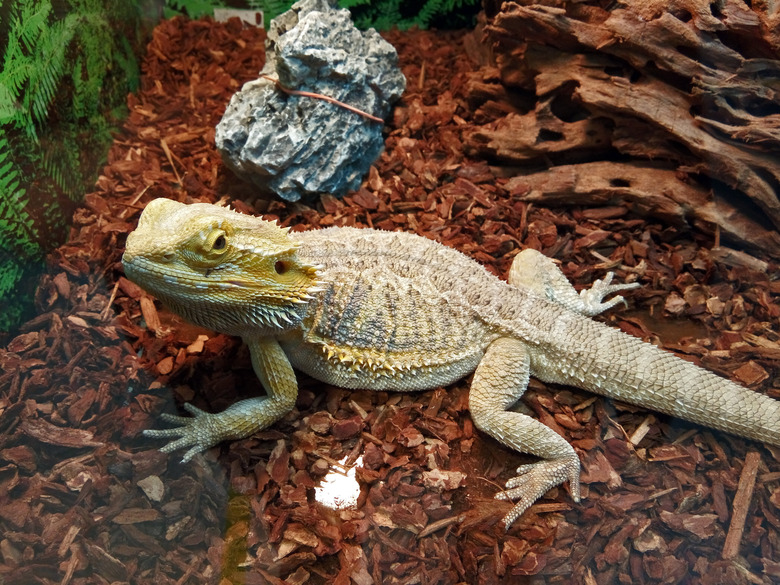How To Tell A Boy Lizard From A Girl Lizard
Different lizard species provide different clues that indicate their gender. The differences between male and female reptiles are obvious for some species, while other species do not display any obvious external signs indicative of gender. In many cases, you must consider a variety of different criteria to determine the sex of a lizard.
Sexual advertisement and physical features
Sexual advertisement and physical features
The males of some lizard species advertise their masculinity with bold colors or with ostentatious crests, horns, or jowls. Such differences between the sexes are common among many chameleons. Male panther chameleons (Furcifer pardalis) display more vibrant colors than their female counterparts do – especially when the males are asserting their dominance.
By contrast, while male Jackson's chameleons (Trioceros jacksonii) are not colored very differently from females, they possess three impressive facial horns. While basilisks (Basiliscus spp.) of both sexes often feature crests, the crests of males are much more flamboyant.
Some species have other physical features that distinguish the sexes. For example, male veiled chameleons (Chamaeleo calyptratus) possess small heel spurs at the time of hatching, while females do not.
Hemipenal bulges on male lizards
Hemipenal bulges on male lizards
Male lizards have paired reproductive structures, called hemipenes. They carry their hemipenes inverted, inside the bases of their tails, and evert them during mating. These hemipenes sometimes create visible bulges at the base of the lizard's tail. It is often helpful to arch your pet's tail over his back gently, which allows you to visualize the paired hemipenal bulges. Twisting the tail—again, gently—to the left or right may also cause the bulges to pop out more.
Body size differences
Body size differences
One common male and female lizard difference is that the males of many common species in the pet trade grow much larger than their female counterparts do. Green iguana (Iguana iguana) males, for example, may reach 7 feet in length, while females rarely exceed 5 feet. Most male monitor lizards (Varanus spp.) grow larger than females do, as do male anoles (Anolis spp.).
The opposite trend does occur, and may even be more common among desert-dwelling lizards. Among species in the pet trade, examples include some knob-tailed geckos (Nephrurus spp.) and stump-tailed chameleons (Brookesia spp.). In all cases, use care when considering size as a diagnostic criterion for sex. Individual variation, differences in age or history, and other factors may complicate the process.
Femoral pores on lizards
Femoral pores on lizards
Males of some species possess enlarged pores along the lower surface of their rear legs or in front of their vents. However, many females have rudimentary pores, and the degree to which they differ from those of males varies from one species to the next. Males of some species—including leopard geckos (Eublepharis macularius) and bearded dragons (Pogona vitticeps)—produce waxy secretions from these pores. You may observe males of these species rubbing their pores on the substrate as a form of territorial marking.
Male and female lizard difference
Male and female lizard difference
If you still cannot determine the sex of your lizard, your veterinarian may be able to provide the answers you seek. Sometimes, by virtue of their considerable experience, reptile-oriented veterinarians can correctly judge subtle characteristics that indicate a specimen's sex. They can also perform a variety of different techniques to collect more information.
For example, your veterinarian may attempt to insert a stainless steel probe into your pet's cloaca. In most cases, the probe will pass more deeply in males than it will in females, as the probe can enter one of the inverted hemipenes.
Alternatively, your vet may try to evert the hemipenes—if they are present—manually, by applying gentle pressure to the animal's tail base. If these techniques fail to produce results, your vet can pass a small camera into your pet's body, through which he can visualize your pet's testes or ovaries and thereby determine your pet's sex.
